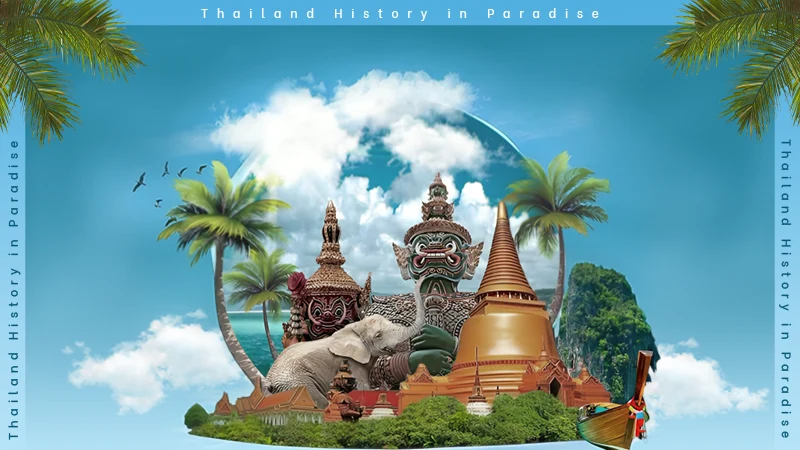
Thailand has long captivated the hearts of travelers worldwide, offering an intoxicating blend of exotic culture, pristine beaches, vibrant cities, and warm hospitality. From the bustling streets of Bangkok to the serene temples of Chiang Mai, and from the limestone cliffs of Krabi to the full moon parties of Koh Phangan, this Southeast Asian gem presents a kaleidoscope of experiences that cater to every type of adventurer.
The Gateway: Bangkok’s Urban Energy
Most journeys to Thailand begin in Bangkok, a sprawling metropolis where ancient temples stand in the shadow of gleaming skyscrapers. The city pulses with an energy that overwhelms and enchants in equal measure. The Grand Palace, with its golden spires reaching toward the sky, remains the country’s most iconic landmark. Within its walls lies Wat Phra Kaew, home to the revered Emerald Buddha, a statue carved from a single block of jade that has witnessed centuries of Thai history.
Beyond the tourist trail, Bangkok reveals its true character in its neighborhoods. The old quarter of Rattanakosin showcases weathered shophouses and street vendors selling everything from fresh coconuts to handcrafted amulets. Khao San Road, once the exclusive domain of backpackers, has evolved into a vibrant entertainment district where travelers from every continent converge. Meanwhile, the trendy districts of Thonglor and Ekkamai attract a cosmopolitan crowd with their rooftop bars, fusion restaurants, and contemporary art galleries.
The city’s waterways offer a different perspective entirely. A longtail boat journey through Bangkok’s canals reveals floating markets where vendors paddle their produce-laden boats alongside traditional wooden houses built on stilts. The Chao Phraya River serves as the city’s liquid highway, with ferries transporting locals and tourists past temples, modern hotels, and glimpses of everyday Thai life.
Northern Charms: Chiang Mai and the Mountains
A short flight north transports visitors to an entirely different Thailand. Chiang Mai, nestled in the mountainous region bordering Myanmar and Laos, offers a more relaxed pace and cooler climate. The old city, surrounded by ancient walls and a moat, contains over 300 temples, each with its own architectural style and spiritual significance. Wat Phra That Doi Suthep, perched on a mountain overlooking the city, requires climbing 309 steps but rewards visitors with panoramic views and one of Thailand’s most sacred Buddhist sites.
The surrounding countryside invites exploration and adventure. Elephant sanctuaries provide ethical encounters with these gentle giants, allowing visitors to observe, feed, and even bathe with them in natural settings. Hiking trails wind through jungle-covered mountains, leading to hidden waterfalls and remote hill tribe villages where indigenous communities maintain their traditional ways of life. Working with a Thailand DMC can help travelers arrange authentic experiences that respect local cultures while providing meaningful interactions.
Chiang Mai’s night markets transform the city after sunset. The Sunday Walking Street market stretches for nearly a kilometer through the old city, offering an incredible array of handicrafts, from intricate silver jewelry to hand-painted umbrellas. Local musicians perform traditional music while vendors grill skewers of satay, filling the air with enticing aromas.
Island Paradise: Thailand’s Coastal Treasures
Thailand’s islands and beaches have achieved legendary status among beach lovers. The Andaman Sea coast, with its dramatic limestone karsts rising from turquoise waters, presents some of the most photographed seascapes on Earth. Phuket, the largest island, offers everything from budget bungalows to ultra-luxury resorts, along with a thriving nightlife scene in Patong Beach.
For those seeking tranquility, the nearby Phi Phi Islands deliver postcard-perfect scenery, though their beauty has made them increasingly popular. Maya Bay, made famous by the film “The Beach,” has undergone periods of closure to allow environmental recovery, highlighting the delicate balance between tourism and conservation.
The Gulf of Thailand provides equally stunning alternatives. Koh Samui combines natural beauty with developed infrastructure, making it ideal for families and those seeking comfort alongside paradise. Its smaller neighbors, Koh Phangan and Koh Tao, cater to different crowds—the former famous for its monthly Full Moon Party, the latter renowned as one of the world’s premier scuba diving destinations.
Further south, the Trang province and its archipelago remain relatively undiscovered. Islands like Koh Kradan and Koh Mook offer pristine beaches and crystal-clear waters without the crowds that plague more famous destinations.
Culinary Adventures
Thai cuisine ranks among the world’s most beloved, and experiencing it in its homeland elevates every dish. Street food culture thrives throughout the country, with vendors perfecting single dishes over decades. Pad Thai, the iconic stir-fried noodle dish, varies from region to region and cook to cook. Som tam, the spicy green papaya salad, delivers an explosive combination of sweet, sour, salty, and spicy flavors that epitomizes Thai cooking philosophy.
Regional specialties showcase the country’s diversity. Northern cuisine features Burmese and Chinese influences, with dishes like khao soi, a coconut curry noodle soup, warming bodies in the cooler mountain climate. Southern cooking embraces fiery heat and liberal use of fresh seafood. Bangkok serves as a melting pot where all regional styles converge alongside international influences.
Cooking classes have become a popular activity, allowing visitors to learn the secrets behind their favorite dishes. Markets tours often precede these classes, teaching participants to identify ingredients like galangal, kaffir lime leaves, and the dozens of chili varieties used in Thai kitchens.
Practical Considerations
Thailand’s well-developed tourism infrastructure makes it accessible to travelers of all budgets and experience levels. The country’s extensive bus and train networks connect major destinations, while domestic flights offer convenient shortcuts for those with limited time. Accommodation ranges from basic guesthouses at a few dollars per night to world-class resorts that define luxury.
The dry season, from November to February, offers the most comfortable weather, though it also brings peak prices and crowds. The hot season from March to May sees temperatures soar, while the monsoon from June to October brings rain but also lush landscapes and significant discounts.
Thai people’s renowned friendliness, often called the “Land of Smiles,” remains genuine despite decades of mass tourism. Respect for Buddhist customs, modest dress at temples, and basic attempts at speaking Thai phrases enhance any visit and are warmly received.
Conclusion
Thailand’s enduring appeal lies in its ability to offer something for everyone while maintaining its distinctive character. Whether seeking spiritual enlightenment in ancient temples, adventure in jungle-clad mountains, relaxation on tropical beaches, or culinary exploration in bustling markets, travelers find experiences that resonate long after they return home. The kingdom continues to evolve, balancing modernization with tradition, tourism with sustainability, creating a destination that rewards both first-time visitors and those returning for their tenth trip with new discoveries and timeless magic.












